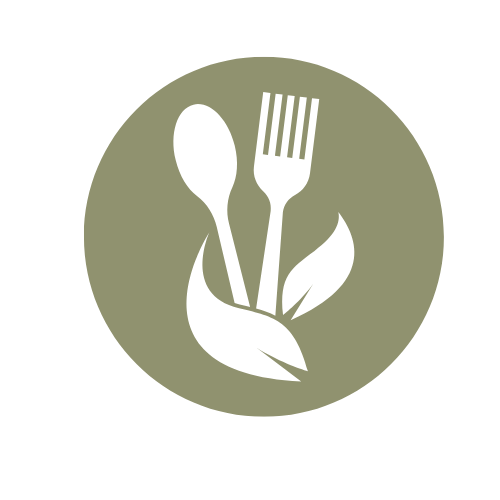Curious about the Japanese Mounjaro recipe that’s buzzing in health circles? You’re not alone. Inspired by natural ingredients and traditional Japanese flavors, this dish is gaining attention as a supportive meal for those following a Mounjaro-inspired diet. In this article, we’ll share a simple version of the Japanese Mounjaro recipe you can make at home no synthetic additives, just real food with real benefits. We’ll also talk about what a Mounjaro day of eating can look like, explore the idea of natural alternatives, and even decode the popular Brazilian Mounjaro version. Whether you’re meal prepping or just craving something fresh, this is for you.
Table of Contents
Japanese Mounjaro Recipe: Natural, Tasty & Weight-Friendly
Cooking has always been my way to reset. Years ago, I spent a quiet weekend testing out recipes after reading about Mounjaro the medication that supports blood sugar and weight loss. As a home cook who avoids processed shortcuts, I was curious if there was a homemade Japanese Mounjaro recipe I could create that echoed its values but leaned on clean, traditional ingredients. That weekend, I dusted off my rice cooker, pulled out a pack of miso, and got to work.
What I came up with was deeply satisfying: a one-bowl dish packed with lean protein, seaweed, fermented flavor, and warm, grounding rice just the kind of food that nourishes without feeling restrictive. That meal has become a staple in my cooking classes for folks looking to enjoy weight-friendly, high-protein meals without giving up taste.
This Japanese Mounjaro recipe focuses on the elements that naturally support fullness and blood sugar balance: fiber from veggies, umami-rich miso, healthy fats from sesame, and lean protein like salmon or tofu. These whole ingredients echo the principles of meals used in Mounjaro-supportive meal plans without needing to follow a rigid diet.
You’ll also see how this fits into a full day of eating, just like we talk about in my class on mindful meal planning. If you’ve tried my miso salmon recipe or ginger scallion chicken, you already know how we do things around here: comforting, easy, and good for the body and the soul.
Making the Japanese Mounjaro Recipe at Home
When people hear “Japanese Mounjaro recipe,” they often imagine something complex or medical—but this dish is anything but. It’s a natural, homemade Japanese Mounjaro-inspired meal built on simple ingredients that naturally support appetite control and gut balance. Think of it as a nourishing bowl built on traditional Japanese flavors with benefits that echo what many people look for when following a Mounjaro-friendly meal plan.
Let’s break it down. At its core, this recipe uses miso broth for gut-friendly fermented flavor, edamame or tofu for lean protein, and konjac noodles yes, the same root that inspired Mounjaro’s name for fiber and fullness. Add in some crisp veggies like bok choy or shredded cabbage, and top it with sesame seeds for healthy fat and crunch.
Here’s what you’ll need:
- Konjac or shirataki noodles (low-carb, high-fiber)
- 1 tablespoon white miso paste
- 1 cup hot water or low-sodium broth
- ½ cup shelled edamame or cubed tofu
- ½ cup shredded carrots
- ½ cup steamed bok choy
- 1 tablespoon sesame seeds
- A dash of tamari or low-sodium soy sauce
This meal comes together in under 10 minutes. Start by dissolving miso in warm broth, then add your cooked noodles. Top with veggies and protein of your choice, finish with a sprinkle of sesame, and serve warm.
For those who love a visual guide, the layering is similar to what I did in the salmon and asparagus sheet pan or the leftover salmon rice bowl simple, smart layering of nutrition and texture.
Next up, we’ll cover how this recipe fits into a day of eating on Mounjaro, plus how to balance meals like this for real life.

Eating the Japanese Mounjaro Way
If you’re wondering, what do I eat in a day on Mounjaro recipes?—you’re not alone. This is one of the most common questions I get in classes and emails. While there’s no one-size-fits-all plan, most successful Mounjaro-style meals have a few things in common: high protein, high fiber, low refined carbs, and whole-food fats.
The Japanese Mounjaro recipe we shared fits beautifully into a day like this. It’s packed with gut-friendly ingredients, keeps you full, and doesn’t spike blood sugar. But what else can you eat around it?
Here’s a sample day to show how simple and flexible it can be:
Breakfast
- Scrambled eggs with spinach
- Half an avocado
- A cup of green tea or miso broth
Lunch
- The Japanese Mounjaro recipe bowl (miso broth, konjac noodles, edamame, veggies)
- Optional: side of fermented veggies like kimchi or tsukemono
Afternoon Snack
- Handful of almonds or roasted seaweed
- A piece of dark chocolate (small square)
Dinner
- Grilled fish or tofu
- Steamed greens with sesame
- Cauliflower rice with tamari
The trick is to keep portions balanced and listen to your body. You want enough fat to satisfy, protein to hold you over, and fiber to support digestion. The natural Japanese Mounjaro recipe works well here because it’s rich in these core elements without relying on synthetic sweeteners or processed foods.
In the next section, we’ll answer some key FAQs like what’s inside the buzzed-about Brazilian Mounjaro and whether a true homemade version really exists.
Breaking Down the Mounjaro Myths
With so much buzz around the Mounjaro name, many people ask: Is there really a homemade Mounjaro recipe? The answer is yes but with a twist. There’s no true pharmaceutical substitute you can whisk up at home, of course. But you can absolutely craft a recipe that mirrors the natural properties Mounjaro is known for: satiety, blood sugar control, and gut hormone activation.
That’s where this Japanese Mounjaro recipe comes in. It focuses on food that does what Mounjaro encourages your body to do: slow digestion, promote fullness, and avoid spikes and crashes. Foods like konjac root (also known as shirataki noodles), miso, seaweed, and fermented veggies play that role naturally.
Now, let’s talk about the Brazilian Mounjaro a term making rounds in fitness circles. It refers to a smoothie or meal plan based around ingredients like flaxseed, papaya, psyllium husk, collagen, and cinnamon. It’s not medical, but many swear it helps curb cravings and support weight management. While different from Japanese-style dishes, the principle is the same: high fiber, balanced macros, and gut-friendly foods.
Both styles offer natural ways to support your health goals without heavy restriction. Whether you go for a tropical twist like the Brazilian version or stick with warm, savory comfort from this Japanese Mounjaro recipe, the heart of the idea is the same: food that works with your body.
The goal isn’t perfection it’s progress. One thoughtful, nourishing meal at a time. And if it’s built on real ingredients and real flavor? That’s the kind of Mounjaro recipe I can stand behind.

FAQs About Japanese Mounjaro Recipes
Is there really a homemade Mounjaro recipe?
There is no medical version you can make at home, but a homemade Mounjaro recipe—like the Japanese version shared here—can mimic the same core goals: helping you feel full, stabilizing energy, and promoting healthy digestion. It uses whole ingredients like konjac noodles, miso, tofu, and fiber-rich vegetables.
What is the natural version of Mounjaro?
The natural version refers to food-based choices that mirror what the medication encourages like gut-friendly fermented foods, soluble fiber (such as shirataki or psyllium), lean proteins, and blood-sugar-friendly meals. This Japanese Mounjaro recipe does just that with simple, powerful ingredients.
What do I eat in a day on Mounjaro recipes?
A day on Mounjaro-inspired meals usually includes high protein, fiber-rich foods, and minimal added sugars or refined carbs. Breakfast could be eggs and avocado, lunch might be this miso noodle bowl, and dinner could include fish and steamed greens. Snacks should be light, like nuts or seaweed.
What is in the Brazilian Mounjaro?
The Brazilian Mounjaro usually refers to smoothies or meal combos built around psyllium husk, flaxseed, papaya, collagen, and cinnamon ingredients that naturally support digestion and fullness. It’s not a medication or supplement, but a wellness trend built around food functionality.
Conclusion
You don’t need a pharmacy to create a Mounjaro-inspired lifestyle. This Japanese Mounjaro recipe is proof that a few thoughtful ingredients can come together in a way that supports balance, satisfaction, and nourishment all in under 10 minutes. Whether you’re following a Mounjaro plan or just looking for a natural reset, this bowl can become a comforting staple in your kitchen.
For more recipes follow me in facebook
Print
Japanese Mounjaro Recipe The Proven Way to Slim Down
- Total Time: 10 minutes
- Yield: 1 bowl 1x
Description
A Japanese-inspired Mounjaro-friendly meal made with konjac noodles, miso, tofu or edamame, and fiber-rich vegetables for a clean, balanced bowl that supports fullness and digestion.
Ingredients
- 1 cup konjac or shirataki noodles
- 1 tbsp white miso paste
- 1 cup hot water or low-sodium broth
- 1/2 cup shelled edamame or cubed tofu
- 1/2 cup shredded carrots
- 1/2 cup steamed bok choy
- 1 tbsp sesame seeds
- 1 tsp tamari or low-sodium soy sauce
Instructions
1. Heat the broth and dissolve the miso paste completely.
2. Add the konjac noodles and simmer for 2–3 minutes.
3. Top with edamame or tofu, carrots, and bok choy.
4. Drizzle tamari and sprinkle sesame seeds on top.
5. Serve warm with chopsticks or a spoon.
Notes
For a spicy version, add chili oil or grated ginger.
Konjac noodles can be swapped with zucchini noodles.
- Prep Time: 5 minutes
- Cook Time: 5 minutes
- Category: Main
- Method: Simmered
- Cuisine: Japanese
Nutrition
- Serving Size: 1 bowl
- Calories: 240
- Sugar: 3g
- Sodium: 520mg
- Fat: 11g
- Saturated Fat: 1.5g
- Unsaturated Fat: 9g
- Trans Fat: 0g
- Carbohydrates: 18g
- Fiber: 8g
- Protein: 14g
- Cholesterol: 0mg







